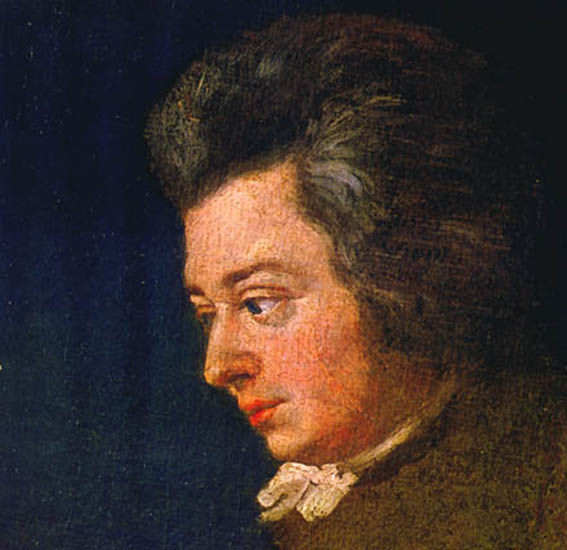Johannes Chrysostomus Wolfgang Theophilus Mozart (1756-1791)
Born January 27, 1756 in Salzburg, Austria.
Died December 5, 1791 in Vienna, Austria.
Overture to The Abduction from the Seraglio K.V. 384
Composed July 1781 – May 1782
First Performance: Opera premiere July 16, 1782 at the Burg Theater in Vienna
Instrumentation: 2 flutes, 2 oboes, 2 clarinets in C, 2 bassoons, 2 horns in C, 2 trumpets in C, timpani, bass drum, triangle, cymbals and strings.
Die Entführung aus dem Serail (The abduction from the Seraglio) was Mozart’s first Vienna success. It was a singspiel in which sung recitatives are replaced by spoken dialog similar to modern Broadway plays. It was this opera that the Emperor allegedly made the comment “Too many notes” to which the self assured Mozart replied “Not one too many.”
The story is about a Spanish nobleman Belmonte trying to rescue his lover Constanze and servants who were kidnapped by Turkish pirates. He finds himself at the palace of the Pasha Selim where he encounters one of his servants who are now in the service of the Pasha. With his help he infiltrates the Seraglio – which is variously translated as Palace or Harem – to liberate Constanze. They are caught and the opera ends with the Pasha granting them their freedom.
At that time there was an interest in the music of the “Near East” manifested in the uses of “unusual” percussion instruments in Haydn’s Military Symphony and Beethoven’s Turkish March.
In a manner similar to the later Magic Flute overture, this overture opens quietly amid a bustling undercurrent which is then interrupted by brash passages which are quite similar to the music played by the Jannisary (Turkish military band) that announces the entrance of the Pasha in the first act.
Example 1.

The contrastingly calm middle of the overture previews the first aria of the opera where Belmonte standing before the palace sings “Now I at last shall see you Constanze.”
Following this brief respite the initial material is reprised and the overture ends in a brilliant flash.
Resources
[amazon template=iframe image&asin=B000000SB6][amazon template=iframe image&asin=3795769957][amazon template=iframe image&asin=B002H0J318][amazon template=iframe image&asin=B00009KHYD]

